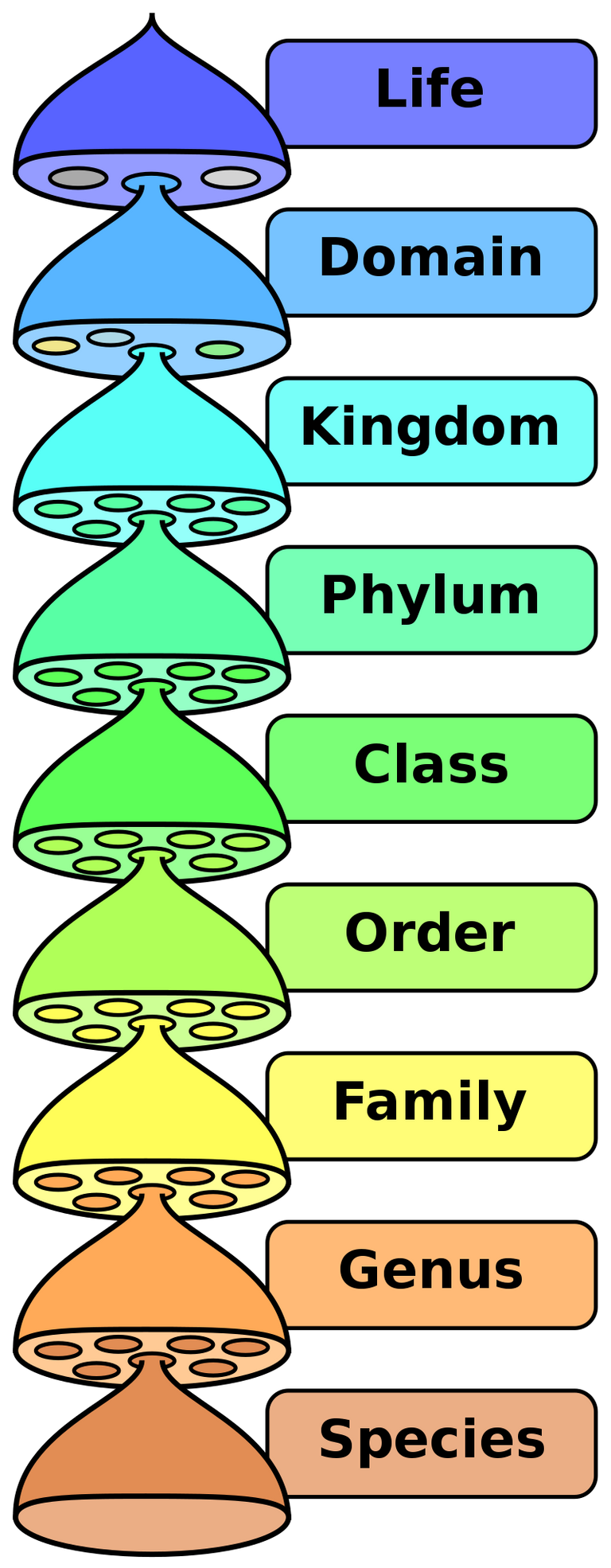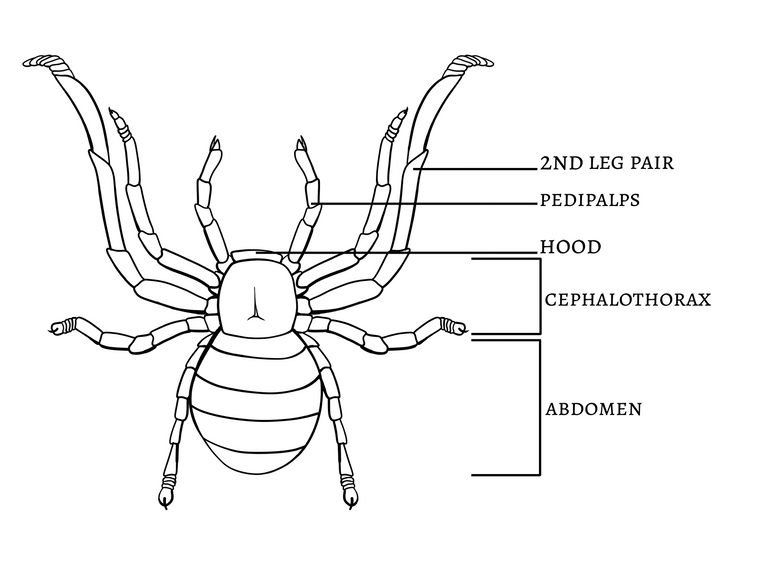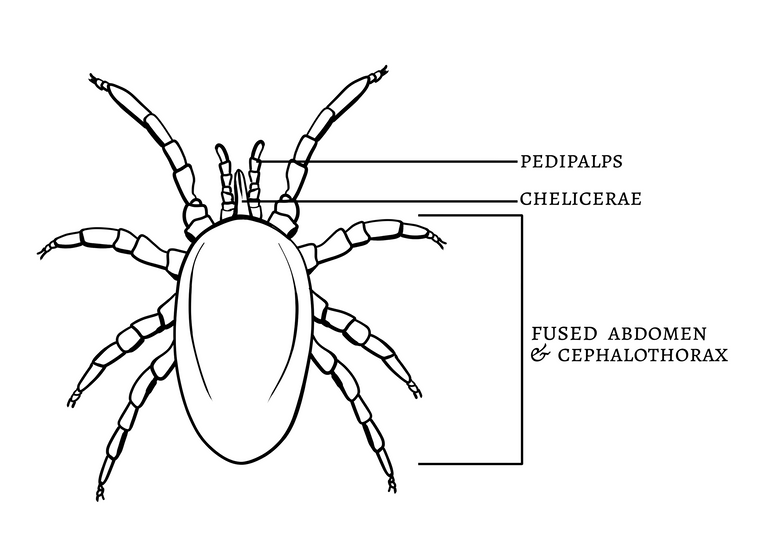

Hello, again! First, I want to give a huge thanks to everyone who upvoted and shared the introduction post! I truly, deeply appreciate the support in spreading awareness not only of the Arachnids community but also of the arachnids themselves. It warms my heart to see more arachnid posts on HIVE lately!
The first step in spreading knowledge of arachnids is by breaking down what seems to be intimidating or scary. The best way to combat fear is through information, and that's what this account and community is about.
Let's set the stage:
You see a creepy-crawly with 8 legs and the brain's first instinct is "spider". But how sure are you that it's a spider you're seeing? That's what we're going to break down in this post. What is that arachnid you see, and how can you tell?

TAXON
Before we get into it, a quick basic introduction into taxonomy is needed. Arachnida is the "class" of animal in the "tree of life", under the "Phylum" called Arthropoda (which means joint-legged), and that phylum is under the "Kingdom" of Animalia (animals). The arachnid class is then divided into "Orders", as I quickly showed in the introduction post.
 An excellent graphic for taxonomy, freely available from Wikimedia Commons along with a version without text for you to fill in yourself and use.
An excellent graphic for taxonomy, freely available from Wikimedia Commons along with a version without text for you to fill in yourself and use.In each Order, you have "families" which are similar types of that animal, for instance all crab spiders belong to the family Thomisidae.
Inside the family are "genera" ("genus" is the singular form of that word) which divide the animals to their closely related types, for instance all widow spiders belong to the genus Latrodectus.
Each genus contains the "species" that belong together. Species is not a grouping like genus or family, but is the exact animal's name. For instance, the brown widow spider found all around the world is called Latrodectus geometricus.
When referring to the scientific name of an arachnid species, the genus is always added. The brown widow spider is not just "geometricus" but is always "Latrodectus geometricus" (or L. geometricus for short). This basic classification is what you'll find across all arachnid Orders. Some Orders may have additional classifications within them, as will some families. But for now, we'll focus on the basic classification system of "Order-Family-Genus-Species".
In example, the brown widow spider's taxon is:
- Order: Araneae
- Family: Theridiidae
- Genus and species: Latrodectus geometricus.
As is often the case, when we aren't certain about what species an arachnid is, we can list it by its Order, family, or genus name and add "sp." instead of the species name. Most of the time, identifying an arachnid to species is near impossible without stereo microscopes and knowing what to look for in the arachnid's anatomy. So listing only the Order, family, or genus is perfectly fine and common practice. Let's say we find a black widow spider but we're not sure what species of black widow it is but we know she's in the genus Latrodectus. We'll list her as Latrodectus sp. and that lets others know it's a widow specifically, and not a different spider or arachnid.

ORDERS
We briefly skimmed over the arachnid Orders in the introduction post, now let's go deeper. Knowing how to identify each Order will go a long way in learning how to identify the family, genus, or species of an arachnid.
Firstly, what do all arachnids have in common? They all have:
- 8 legs as adults,
- chelicerae (jaw-like mouth parts),
- 2 body parts called tagmata: the cephalothorax (the front part where the eyes and mouth are) and the abdomen (the back part, usually the largest part),
- and they all have pedipalps (special leg-like appendages that are used for various things like sensing, mating, and defence).
1. ARANEAE (SPIDERS)
 Graphic made by @anikekirsten for personal use only. For a more detailed spider anatomy image, click here .
Graphic made by @anikekirsten for personal use only. For a more detailed spider anatomy image, click here .We'll start with spiders, because they're more commonly known and mostly confused with other arachnids. Spiders have fangs, which can't easily be seen in small spiders.
Another iconic feature of spiders are the spinnerets, an organ near or at the base tip of the abdomen that produces and excretes silk, which spiders use for building webs and egg sacs or for throwing or spitting at prey. The pedipalps of spiders look like their legs, and can sometimes be long enough to look like extra legs.
In summary, to identify if an arachnid is a spider you need to see:
- 2 fangs (if the spider is large enough)
- 2 leg-like pedipalps
- spinnerets (or at least silk / webbing if the spider is small).
Araneae currently has 131 families, and you can explore the families in the World Spider Catalog.
2. SCORPIONES (SCORPIONS)
 Graphic made by @anikekirsten for personal use only. For a more detailed scorpion anatomy image, click here .
Graphic made by @anikekirsten for personal use only. For a more detailed scorpion anatomy image, click here .Next up, let's take a look at what defines a scorpion. This Order is perhaps the easiest to identify because the physical characteristics are very easy to see, even in small scorpions. Unlike spiders, scorpions have a tail. Seeing the division between the cephalothorax and abdomen is not so easy and can look like it's one long body.
Scorpions also have 2 pincers (the claw-like limbs in the front), which are attached to their pedipalps. These features, together with the tail, are iconic in scorpions, but the tail is the most iconic: at the end of the tail is the stinger that produces and releases venom.
In summary, a scorpion is identifiable by having:
- 2 pincers in the front of its body
- a tail that ends with a stinger.
Scorpiones currently has 13 families, and you can explore the families in the The Scorpion Files.
3. OPILIONES (HARVESTMEN)
 Graphic made by @anikekirsten for personal use only. For a more detailed harvestman anatomy image, click here .
Graphic made by @anikekirsten for personal use only. For a more detailed harvestman anatomy image, click here .Next up are the harvestmen. These arachnids are very often confused for spiders. And it's easy to see why. They look very much the same. But there is an easy way to tell them apart. Harvestmen, also called Daddy-Long-Legs, also have 2 tagmata but their body is shaped in such a way that it looks fused together.
Harvestmen are also iconic because of their "curly" long legs, though some species have short legs. Another interesting fact about harvestmen is that not all of them have 8 legs! Some only get 8 legs when they become adults. They also have no venom glands and they don't produce any silk.
In summary, you can tell it's a harvestman by seeing:
- what looks like a one-part body
- 2 short leg-like pedipalps
- no webbing.
Opiliones currently has 68 families in 5 suborders, and you can explore them in the World Catalogue of Opiliones.
4. SOLIFUGAE (CAMEL SPIDERS)
 Graphic made by @anikekirsten for personal use only. For a more detailed solifuge anatomy image, click here .
Graphic made by @anikekirsten for personal use only. For a more detailed solifuge anatomy image, click here .Unlike what the name "camel spider" suggests, solifuges are not spiders. Nor are they scorpions. They're very often confused for spiders and scorpions due to them looking a lot like them. But there are differences that are easy to tell them apart by. The main difference is that solifuges have very large chelicerae.
Solifuges have no silk glands or venom glands. They also have no pincers or a tail. The shape of the cephalothorax makes it look like solifuges have a "neck" and "head". The pedipalps of solifuges are often so long that it looks like they have 10 legs instead of 8.
To sum it up, you can spot a solifuge by seeing:
- 2 long pedipalps that look like extra legs
- large chelicerae
- no web
- no tail.
Solifugae currently has 12 families and you can explore them in the Western Australian Museum's Solifuges of the World catalogue.
5. PSEUDOSCORPIONES (FALSE SCORPIONS)
 Graphic made by @anikekirsten for personal use only. For a more detailed pseudoscorpion anatomy image, click here .
Graphic made by @anikekirsten for personal use only. For a more detailed pseudoscorpion anatomy image, click here .Pseudoscorpions are also known as fake/false scorpions or book scorpions. And they really do look like scorpions! The main difference is that false scorpions are tiny and they don't have a tail. Their body and pincers on their pedipalps look almost exactly like a scorpion.
They also, unlike scorpions, can make silk and their venom is in their pincers. These arachnids are easy to identify, though they are difficult to see because of how small they are.
To identify a book scorpion, you need to see:
- a tiny body
- pincers on the pedipalps
- possibly some webbing
- no tail.
Pseudoscorpiones currently has 26 families and you can explore them in the World Pseudoscorpiones Catalogue.
6. AMBLYPYGI (WHIP-SPIDERS)
 Graphic made by @anikekirsten for personal use only.
Graphic made by @anikekirsten for personal use only.By far the most scary-looking arachnid, whip-spiders (also called tailless whipscorpions) are actually not dangerous. They are also the most unique-looking of the arachnids with their large claws and very long and thin first 2 legs that look like whips.
Their pedipalps, as mentioned above, form into claw-like limbs that are often very long and can fold and unfold. Their first leg pair (the first leg on either side) are not used for walking at all but instead are used to sense their environment, much like antennae in insects. That's why they're so thin and long. Whip-spiders have no silk glands or venom glands, either.
In sum, you can tell it's a whip-spider when you see:
- 2 long clawed pedipalps
- 2 long and thin legs in the front
- no web
- no tail.
Amblypygi currently has 5 families and you can explore them in the World Amblypygi Catalog.
7. THELYPHONIDA / UROPYGI (VINEGAROON)
 Graphic made by @anikekirsten for personal use only. For a more detailed vinegaroon anatomy image, click here .
Graphic made by @anikekirsten for personal use only. For a more detailed vinegaroon anatomy image, click here .The common names can be confusing between whip-spiders (Amblypygi) and whipscorpions (Thelyphonida), known also as vinegaroons, and so can how they look. The defining feature of vinegaroons is their thin and long whip-like tail. Unlike the thick tail of a scorpion, a vinegaroon's tail has no stinger.
Like their cousins, the scorpion, vinegaroons have modified pedipalps that form pincers at the ends. And like whip-spiders, vinegaroons also use their first leg pair (which are thinner and longer than their other legs) as sensors instead of for walking.
They also have no silk or venom glands, but vinegaroons can produce and spray an acidic liquid that smells like vinegar.
In summary, you can see it's a vinegaroon because it has:
- a whip-like tail
- pincers on its pedipalps
- no webbing
- 2 longer and thinner front legs.
Thelyphonida currently has only 1 family and you can explore it and its genera in the World Uropygi Catalog.
8. SCHIZOMIDA (SHORT-TAILED WHIPSCORPIONS)
 Graphic made by @anikekirsten for personal use only.
Graphic made by @anikekirsten for personal use only.These arachnids look almost identical to vinegaroons. But they do have some defining features that makes them easy to identify. Namely, schizomids are tiny. Very tiny! Their whip-like tail is also short compared to their body size.
Like their cousins, Schizomids also use their first leg pair as sensory organs instead of legs to walk on. And they also have pedipalps that end in pincers. Unlike vinegaroons, they don't produce an acidic liquid. Schizomids can also jump using their hind legs!
To sum it up, a schizomid can be spotted by seeing:
- a tiny body
- a short stick-like tail
- pincers on its pedipalps
- no webbing
- 2 longer and thinner front legs.
Schizomida currently has only 2 families and you can explore them in the World Schizomida Catalog.
9. PALPIGRADI (MICRO WHIPSCORPIONS)
 Graphic made by @anikekirsten for personal use only.
Graphic made by @anikekirsten for personal use only.The micro whipscorpion is very easy to identify because they are very very small. Which also means they're not easy to see. So if you do get to see one, they'll look almost like their cousins the vinegaroons, except for their size and lack of pincers. The micro whipscorpions also have long setae ("hair") on their tails.
Also like their cousins, the micro whipscorpion's first leg pair is used as sensors. Strangely, however, they use their pedipalps to walk with. These arachnids also have no eyes!
In sum, if you spot a micro whipscorpion, you'll see:
- a tiny body,
- a hairy whip-like tail
- 2 long leg-like pedipalps
- no webbing
- 2 longer front legs.
Palpigradi currently has only 2 families and you can explore them in the World Palpigradi Catalog.
9. RICINULEI (HOODED TICKSPIDERS)
 Graphic made by @anikekirsten for personal use only.
Graphic made by @anikekirsten for personal use only.The hooded tickspider is one of the strangest arachnids. As its common name suggests, they have a "hood" that can be pulled up or down to cover their chelicerae. They look like spiders but they can be differentiated by their long 2nd leg pair (the second leg on either side) which is used as sensory organs.
Unlike spiders, however, hooded tickspiders have pincers on the ends of their small pedipalps. These pincers are very small. These arachnids also have no eyes.
In summary, if you find one, you'll see:
- 2 very small pedipalps (if you can see them)
- 2 long second leg pair
- smooth "head" when the hood is pulled down.
Ricinulei currently has only 1 family and you can explore it and its 3 genera in the World Ricinulei Catalog.
10. ACARIFORMES & PARASITIFORMES (MITES & TICKS)
 Graphic made by @anikekirsten for personal use only.
Graphic made by @anikekirsten for personal use only.There is a division in the arachnology world where arachnologists and arachnological societies exclude mites and ticks when speaking about arachnids. For the sake of current science, I will be including them in the discussion because they are, in fact, arachnids.
Acariformes and Parasitiformes are the names of what's called a Superorder, which is a grouping of similar Orders. There are several Orders of mites and one Order of ticks (Ixodida) within them.
Mites and ticks both are distinguishable by a common feature not seen in other arachnids: their cephalothorax and abdomen are actually fused together. They usually have an oval-shaped body, as well. Mites and ticks are tiny and some species can be microscopic (like dust mites).
In summary, a visible mite or tick can be identified by seeing:
- a tiny body
- no webbing
- no tail
- fused oval body that has no division.
Acariformes & Parasitiformes currently have several Orders and hundreds of families, and you can explore them in the NCBI Taxonomy Database.

I do hope you enjoyed this quick guide to identifying arachnids and that you've learned something from it for the next time you come across an arachnid! Please share this post with anyone you think would be interested.

and help show support and encouragment toward arachnid posts on the HIVE blockchain.
Please feel free to use the information and graphics in this post for your personal arachnid projects to help you better identify what Order the arachnid belongs to. Unlabelled versions of the drawings are freely available in our Discord server.
Congratulations @hive-100750! You have completed the following achievement on the Hive blockchain and have been rewarded with new badge(s):
Your next target is to reach 50 upvotes.
You can view your badges on your board and compare yourself to others in the Ranking
If you no longer want to receive notifications, reply to this comment with the word
STOPTo support your work, I also upvoted your post!
Check out the last post from @hivebuzz:
Support the HiveBuzz project. Vote for our proposal!
Yay! 🤗
Your content has been boosted with Ecency Points, by @hive-100750.
Use Ecency daily to boost your growth on platform!
Support Ecency
Vote for new Proposal
Delegate HP and earn more
Thanks for your contribution to the STEMsocial community. Feel free to join us on discord to get to know the rest of us!
Please consider delegating to the @stemsocial account (85% of the curation rewards are returned).
You may also include @stemsocial as a beneficiary of the rewards of this post to get a stronger support.